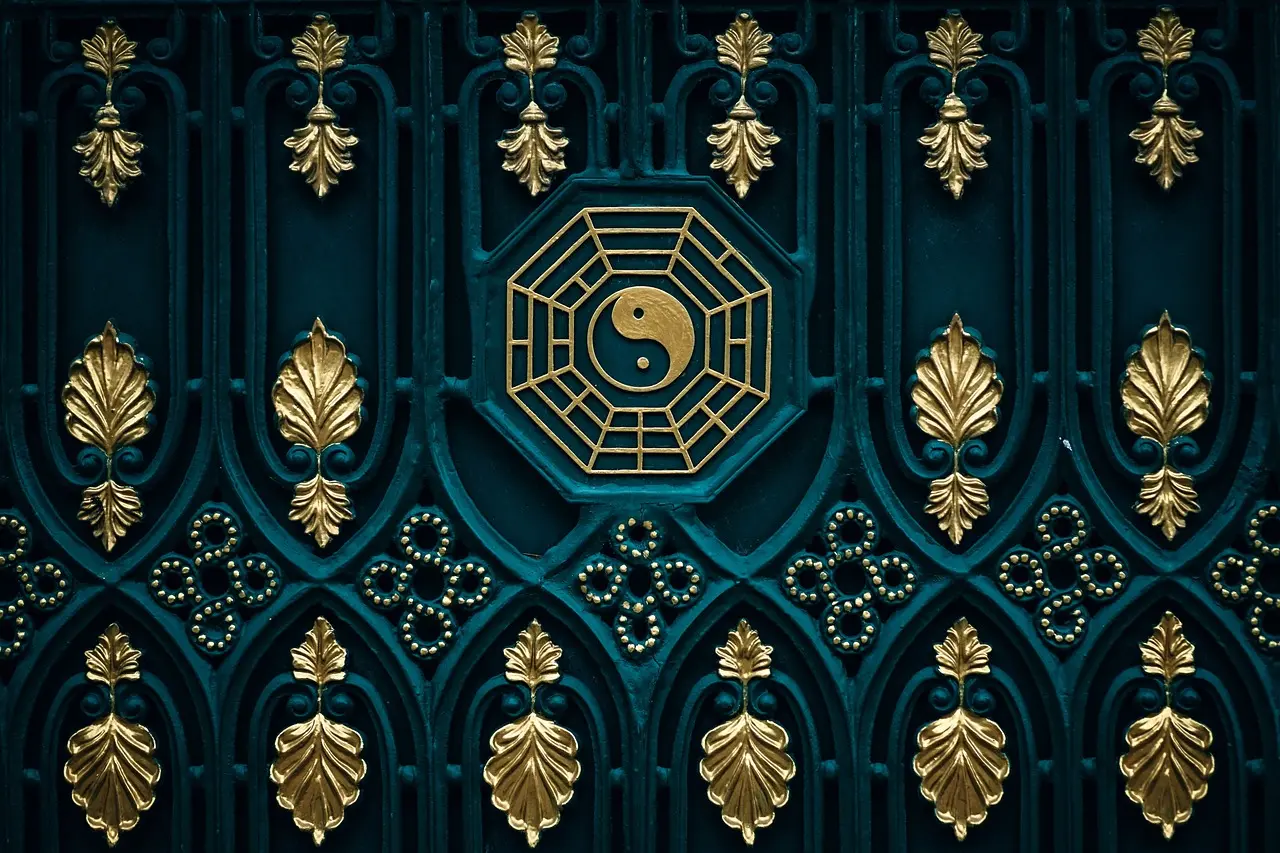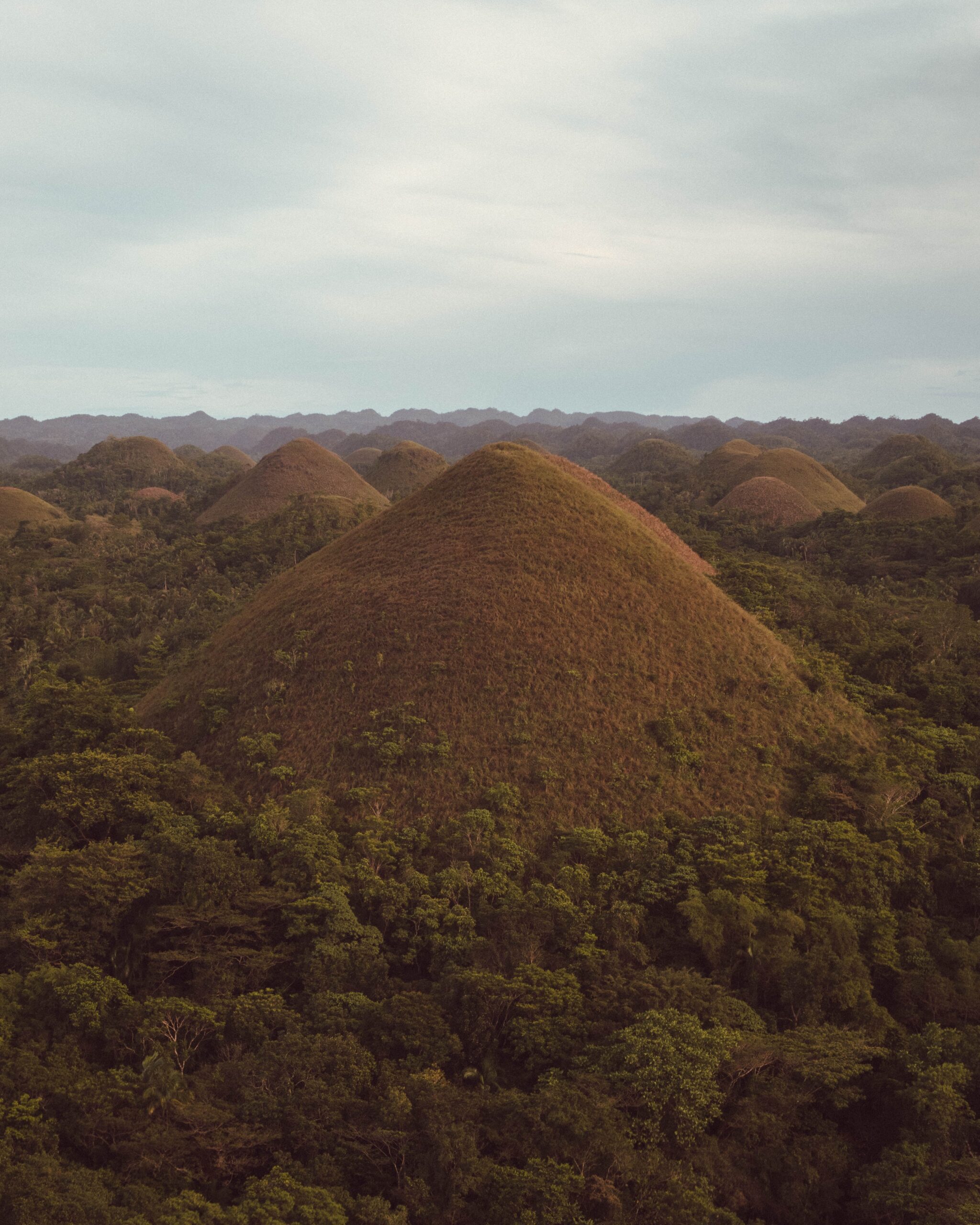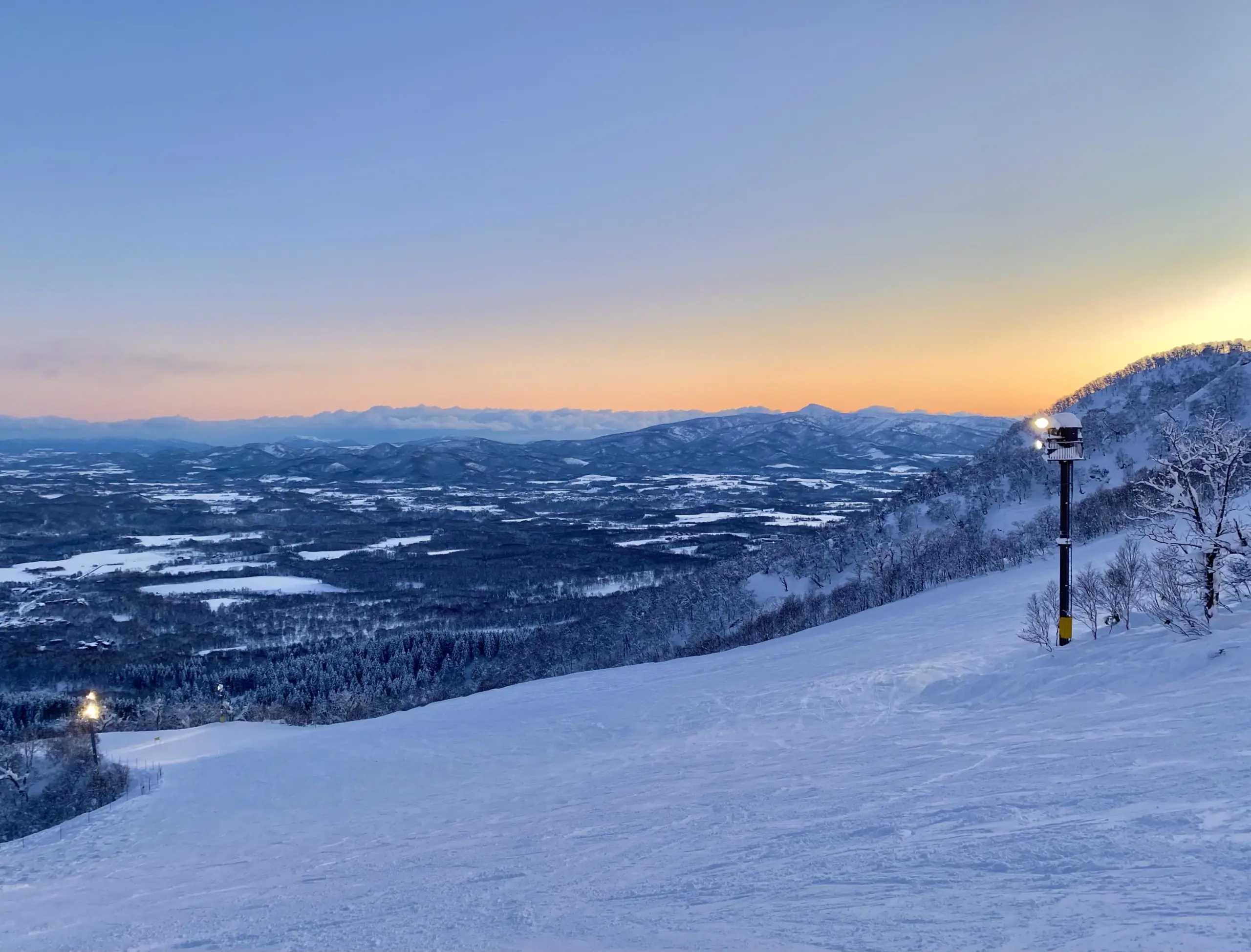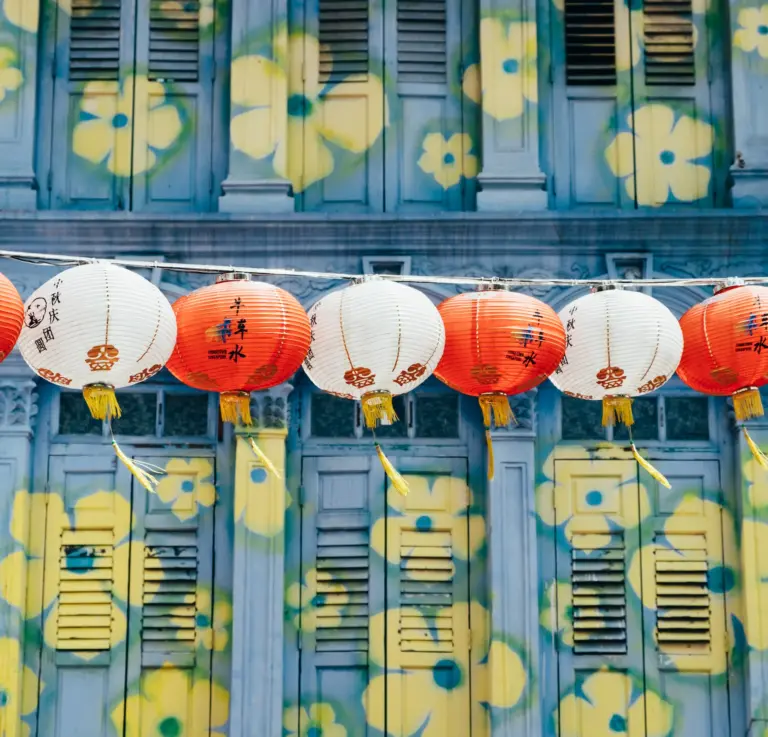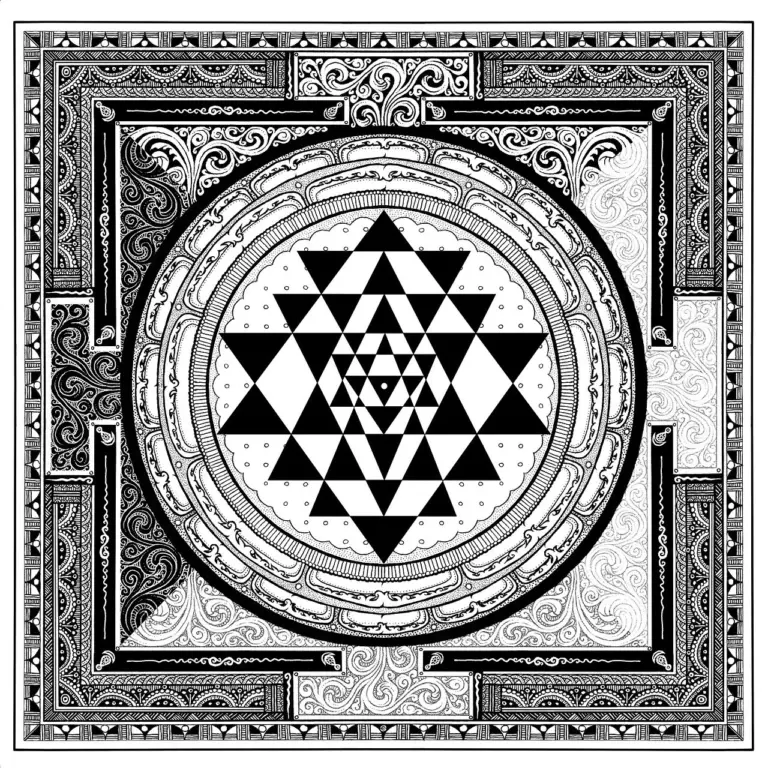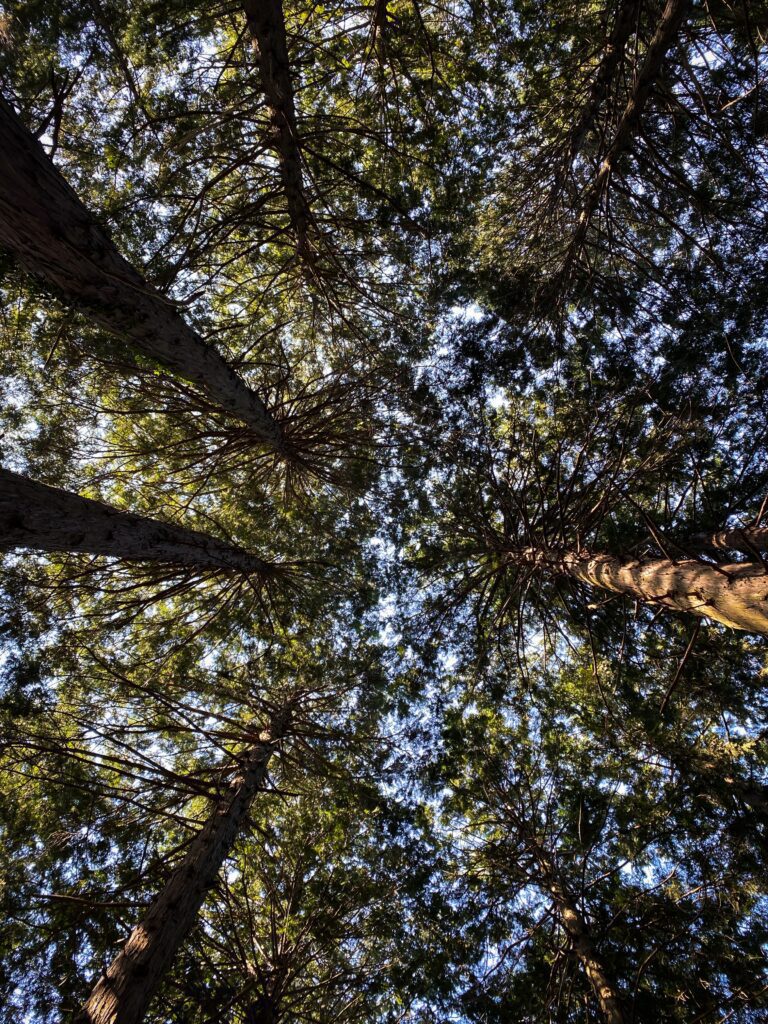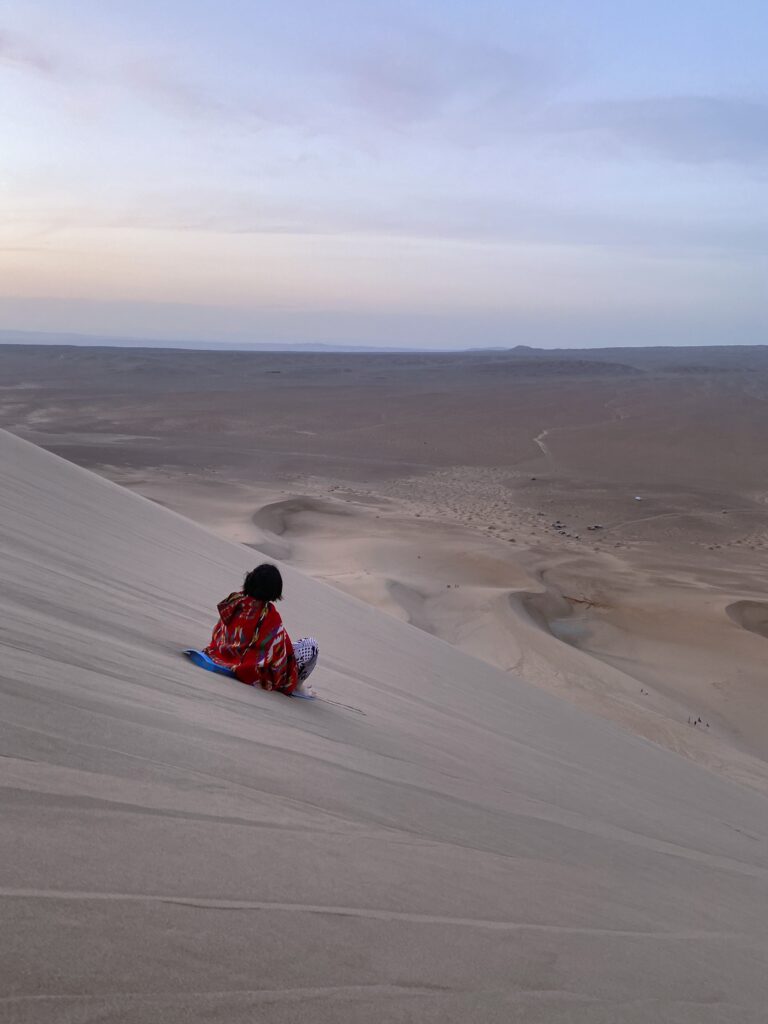In Buddhist mythology, the Four Heavenly Kings, also known as the Shitennou in Japan, stand as towering figures of protection.
These guardian deities each rule one of the cardinal directions and symbolize the protective power of the Dharma, the core teachings of Buddhism.
Originating from early Buddhist texts, the Shitennou are revered as guardians of the world and the faith itself, residing on the lower slopes of Mt. Meru, the mythic center of the Buddhist universe.
Each king safeguards a specific direction: Dhritarashtra in the East; Virudhaka in the South; Virupaksha in the West; and Vaisravana in the North.
Let’s get to know them more, shall we?
Table of Contents
Toggle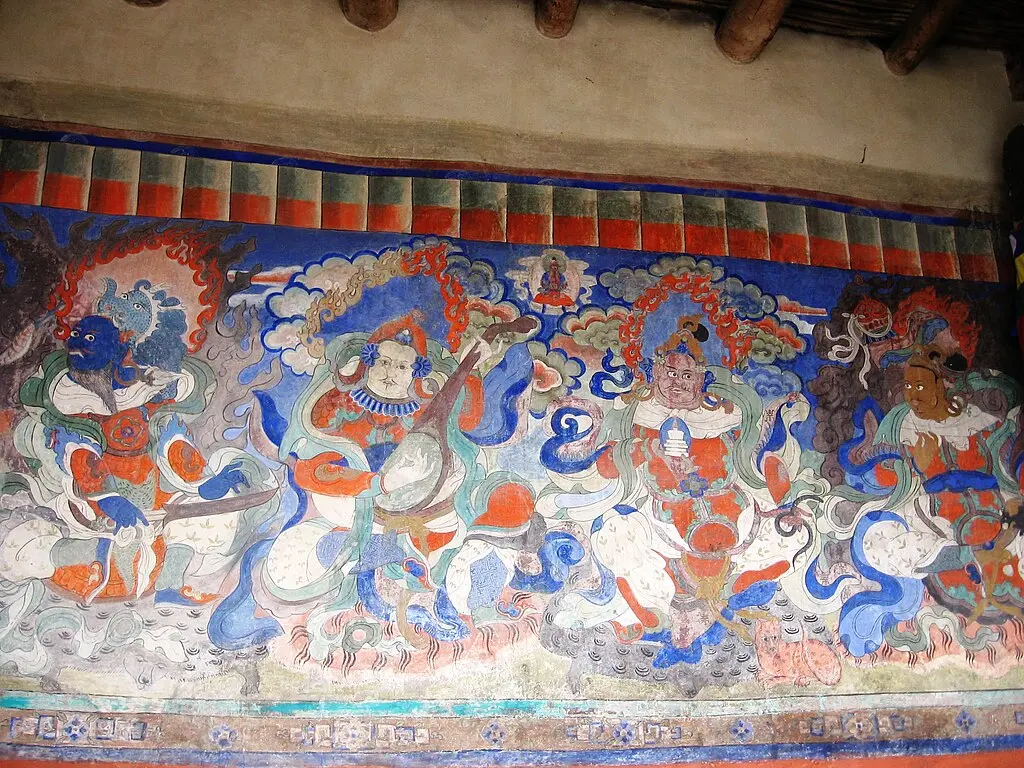
Origin of the Four Heavenly Kings
The Four Heavenly Kings first appear in the Pali Canon and the Mahayana Sutras, where they are depicted as defenders of the Buddhist law and protectors against evil.
The journey of Buddhism from India to East Asia was crucial in diversifying the worship of the Shitennou. As they were assimilated into local religious practices, their roles expanded beyond their original Buddhist context.
In Japanese Buddhism, for instance, the Shitennou came to be seen as protectors of the nation, while in Chinese Buddhism, they were revered for their power over natural elements and fortune.
Who are the Four Heavenly Kings?
Each of the Four Heavenly Kings is associated with specific qualities and elements, commanding supernatural beings and symbolizing various aspects of Buddhist teachings:
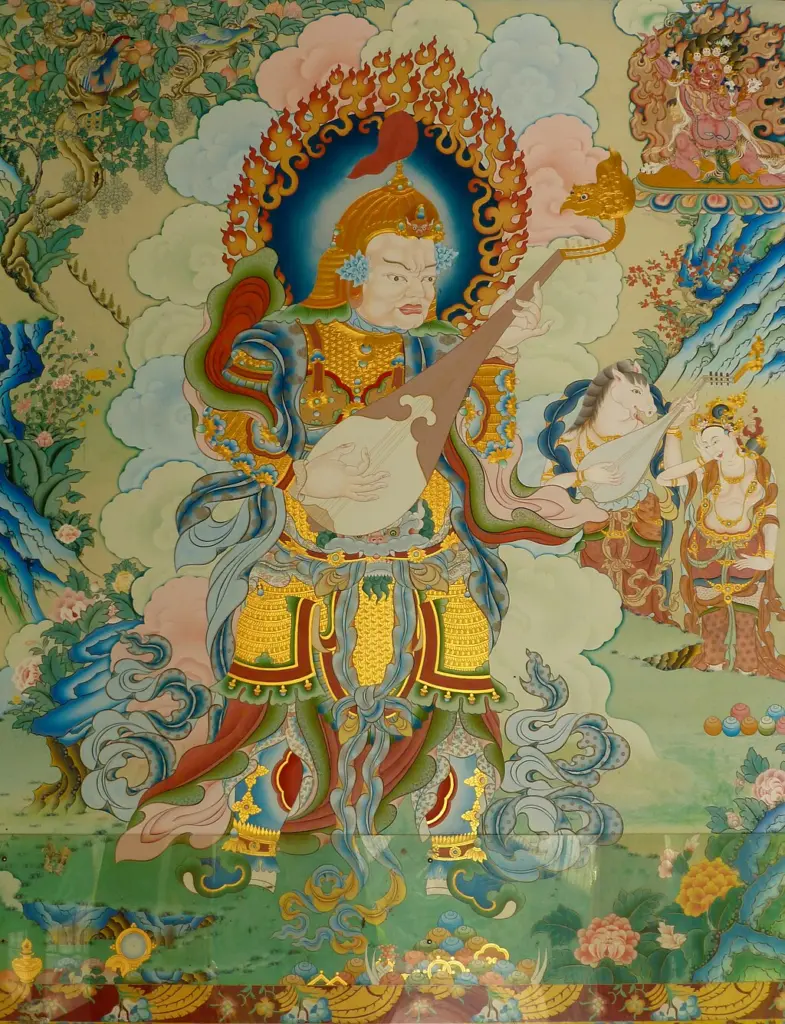
- Name Meaning: Dhritarashtra is Sanskrit for “He who upholds the realm”
- Dominion: Gandharvas
- Color: White
- Symbols: Pipa
- Direction: East
- Japanese Name: Jikokuten (In Japan, Jikokuten carries a sword instead)
1. Dhritarashtra - Guardian of the East
Dhritarashtra (not to be mistaken with the king of the same name from the Ramayana) is traditionally depicted holding a pipa (lute), a symbol deeply intertwined with his role as the leader of the Gandharvas, celestial musicians in Buddhist cosmology.
The pipa represents the harmony of the universe and the Buddhist teaching that the Dharma should be as pleasing and welcoming as music. His association with music also symbolizes the spreading of Buddhist teachings in a manner that is melodious and appealing to all beings.
The lute, with its strings, is sometimes interpreted as a metaphor for the interconnectedness of all things and the importance of maintaining balance in life.
His direction, the East, is traditionally considered auspicious and significant in various Asian cultures, often associated with new beginnings and enlightenment.

- Name Meaning: “He who causes to grow”
- Dominion: Kumbhandas
- Color: Blue
- Symbols: Sword
- Direction: South
- Japanese Name: Zochoten (In Japan, Zochoten carries a pike)
2. Virudhaka - Guardian of the South
Virudhaka is a commanding figure representing growth, power, and justice. He is typically depicted wielding a sword, a potent symbol of his role as a protector and enforcer of moral law.
The sword signifies the cutting away of ignorance and delusion (quite similar to Bodhisattva Manjushri), aligning with Buddhist teachings that emphasize the elimination of negative mental states for spiritual growth. (See also: The Three Poisons)
His direction, the South, is associated with the flourishing of life, further emphasizing his role in promoting growth and prosperity.
He is known to lead the Kumbhandas, dwarf-like spirits, symbolizing his command over the earth and its riches.
Virudhaka’s symbolism extends to the concept of righteous governance. His sword, as a tool of justice, represents the need to overcome obstacles to peace, both externally in society and internally within the individual’s mind.
Additionally, Virudhaka’s fearsome aspect serves as a reminder of the impermanence of life and the inevitability of karmic consequences.

- Name Meaning: “He who sees all”
- Dominion: Nagas
- Color: Red
- Symbols: Serpent, Stupa, Pearl
- Direction: West
- Japanese Name: Komokuten (Typically seen holding a sutra and writing brush in Japan)
3. Virupaksha - Guardian of the West
Virupaksha holds a distinct position as the overseer of all things.
He is often depicted holding a snake or a stupa. The snake, a common symbol in many cultures, represents wisdom and the ability to perceive hidden truths, aligning with Virupaksha’s role as the watcher of the western realm.
His gaze is sometimes described as all-seeing, symbolizing the omniscience and omnipresence of Buddhist teachings.
Legends of Virupaksha often emphasize his role as the guardian of the Nagas, the serpent beings. He is revered for his ability to control these powerful creatures. In some stories, Virupaksha uses his powers to reveal truths and unmask deceptions.
Furthermore, Virupaksha’s association with the West ties into the Buddhist understanding of life’s journey. His realm represents the final stages of spiritual development, where wisdom is attained, and enlightenment is within reach. Which aligns closely with the idea of Amitabha Buddha‘s Western Pure Land.

- Name Meaning: “He who hears everything”
- Dominion: Yakshas
- Color: Yellow or Green
- Symbols: Mongoose, Umbrella, Stupa
- Direction: North
- Japanese Name: Bishamonten, Tamonten
4. Vaisravana - Guardian of the North
Vaisravana, also known as Kubera, is commonly depicted with a mongoose, which in many Eastern traditions is associated with the dispersal of negativities, especially greed.
This unique attribute aligns with Vaisravana’s role as a protector of wealth. Which is why in Japan, he is considered as one of the Seven Lucky Gods (Bishamonten).
Legends associated with Vaisravana often depict him as a generous deity, overseeing the distribution of wealth and ensuring that resources are used wisely and justly.
As the leader of the Yakshas, nature spirits, Vaisravana is also seen as a guardian of natural treasures.
His association with wealth is not just material but also spiritual, emphasizing that true prosperity lies in spiritual development and the practice of generosity. The mongoose, often depicted spitting jewels, represents the transformation of greed into generosity, a key teaching in Buddhism about overcoming selfish desires. (See also: The Three Antidotes)
His presence in Buddhist iconography serves as a reminder of the importance of material resources in supporting the practice of Dharma, yet always within the context of ethical and moral considerations.

Mythology of the Four Heavenly Kings
The Four Heavenly Kings serve under the command of Sakra (Indra), the lord of the devas of Trayastrimsa.
The Kings perform regular inspections of the human world. On specific days of the lunar month – the 8th, 14th, and 15th – they either send out emissaries or personally venture into the world of men to assess the prevailing state of morality and virtue.
Once their assessments are complete, the Kings report their findings to the assembly of the Trayastrimsa devas. This process underscores the Buddhist belief in a morally ordered universe, where the actions of humans are subject to evaluation by higher celestial powers.
Moreover, the Kings’ protective role extends to guarding the realm of the Trayastrimsa devas against attacks by the Asuras, a group of deities often depicted as antagonists in Buddhist and Hindu mythologies.
This protective duty stems from a historical celestial conflict, where the Asuras threatened the very existence of the deva’s realm. The Kings, with their mighty power and martial prowess, stand as formidable defenders against such cosmic threats.
Their vow to protect the Buddha, the Dharma, and the Buddha’s followers further cements their role as guardians in the Buddhist cosmological order. This vow is particularly emphasized in Chinese Buddhism, where the Kings are revered as part of the Twenty-Four Devas, a group of dharmapalas (protectors of the Dharma).
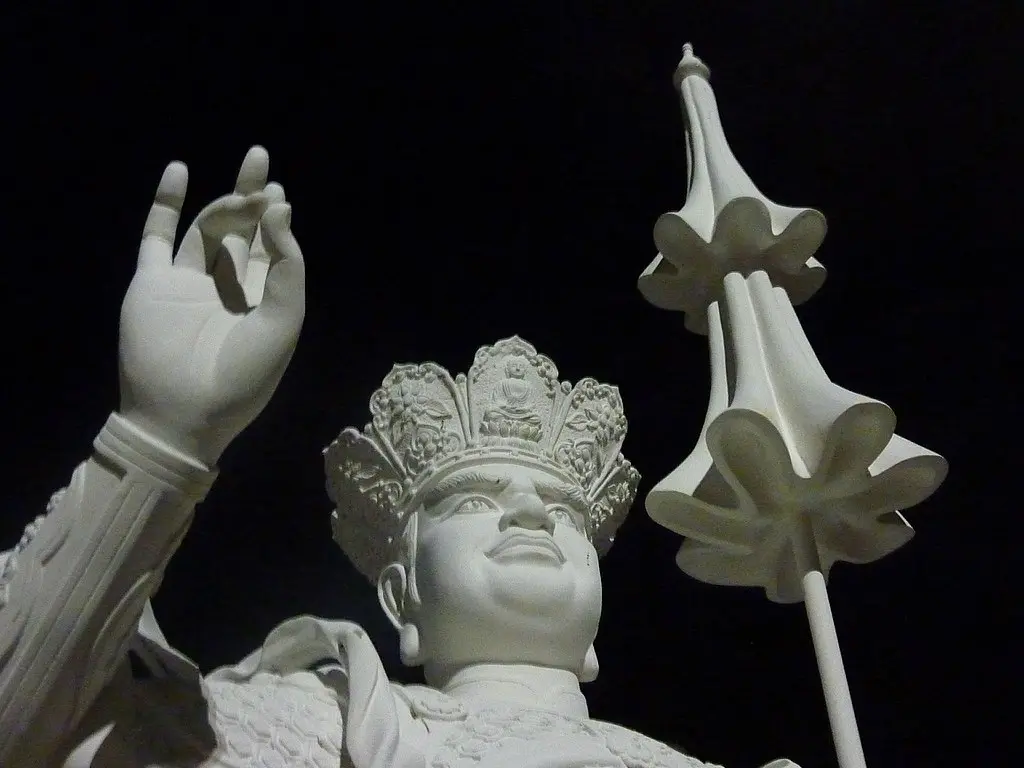
Interpretation in Different Buddhist Traditions
-
In Theravada traditions, prevalent in countries like Sri Lanka, Thailand, and Myanmar, the Shitennou are often revered for their protective roles. Their depictions are usually more aligned with the early Buddhist texts, focusing on their aspects as guardians of the world. The emphasis is less on elaborate iconography and more on their symbolic role as protectors of the Dharma.
-
Mahayana traditions, which are widespread in East Asia, including China, Japan, and Korea, often portray the Shitennou in a more symbolic manner. Their images in Mahayana Buddhist temples are not just protective but also serve as reminders of the Mahayana ideals like compassion, wisdom, and the pursuit of enlightenment for all beings. Each King’s attributes and legends are deeply explored and integrated into the religious practices.
-
In Vajrayana Buddhism, the Shitennou are sometimes included within the broader pantheon of protective deities. They are often depicted with a more wrathful appearance, symbolizing the fierce and active aspect of compassion and the relentless pursuit of overcoming obstacles on the path to enlightenment.

Role in Temple Architecture
In many Buddhist temples, the Shitennou are depicted at the entrance or the four corners of the temple grounds. This placement symbolizes their role in guarding the temple from malevolent forces and ensuring the purity of the sacred space. Their presence is meant to ward off evil spirits and to protect the sanctity of the temple. I’ve seen them particularly in Seishoji Temple in Minato and in Hasedera Temple at Kamakura (though in miniature form). Other notable temples include:
-
Todai-ji Temple: Found in Nara, famous for its Great Buddha Hall, Todai-ji also houses magnificent statues of the Shitennou, which are considered national treasures. These statues are renowned for their size and artistic detail, exemplifying the Shitennou’s guardianship role.
-
Kiyomizu-dera: This historic temple in Kyoto features depictions of the Shitennou. The temple’s layout and architecture incorporate the guardians in a way that symbolizes their protective presence over the site.
-
Gangaramaya Temple: This temple in Sri Lanka is known for its eclectic mix of architectural styles and houses representations of the Shitennou, reflecting their significance in Theravada Buddhism.
-
Daeungjeon Hall: Part of the Jogyesa Temple in Seoul, Daeungjeon Hall features the Shitennou in its architecture, showcasing their role in Korean Buddhist practices.

